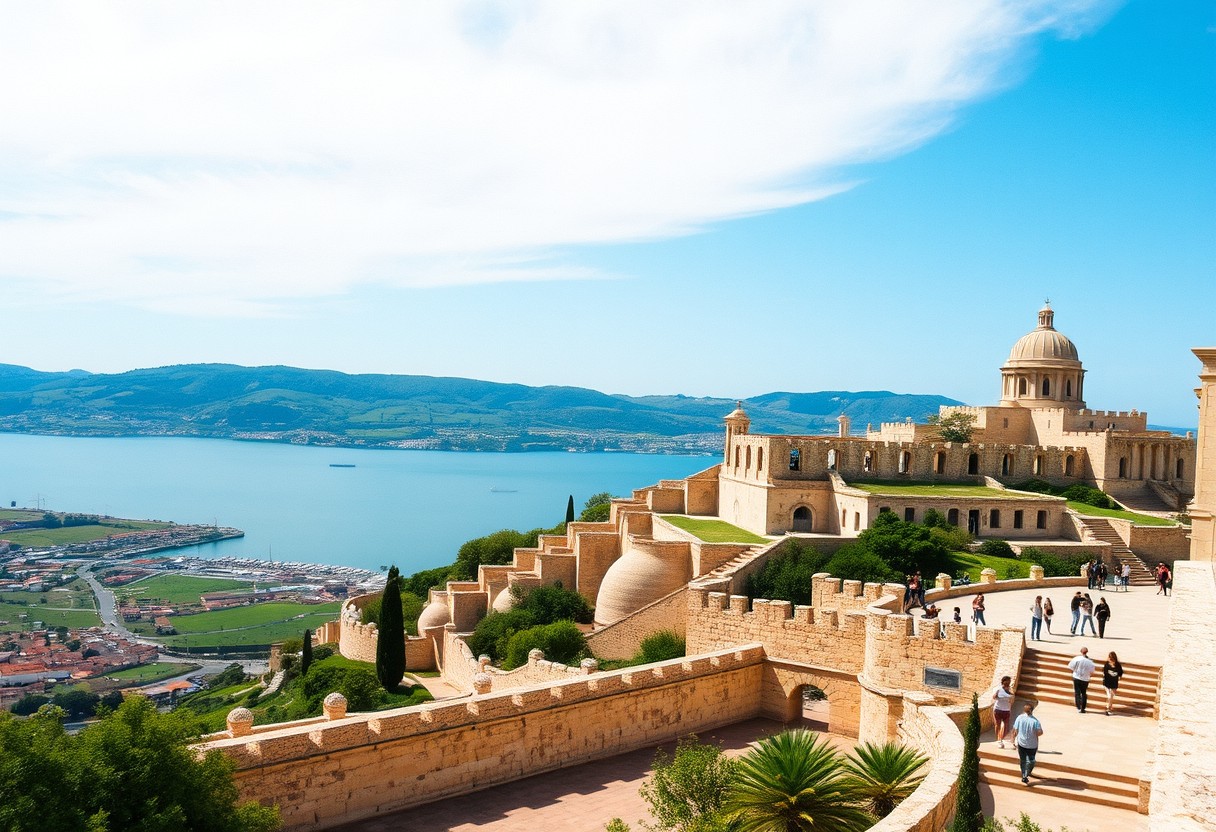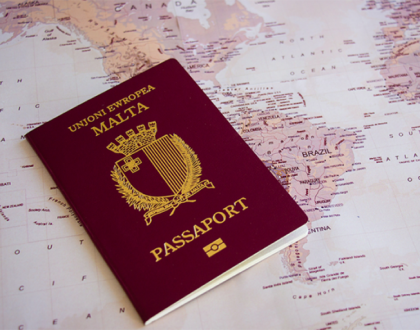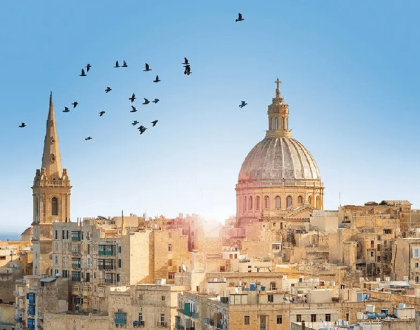Malta’s Historic Sites in September

You will find that September is an ideal time to explore Malta’s rich tapestry of historic sites. With a delightful climate, fewer crowds, and plenty of cultural events, this beautiful Mediterranean archipelago offers an enchanting blend of ancient architecture and stunning landscapes. From the megalithic temples of Ħaġar Qim to the stunning streets of Mdina, each site tells a unique story of Malta's storied past. Dive into this guide to make the most of your historical exploration and uncover the wonders that await you in Malta this September.
Overview of Malta's Historic Significance
As you launch on your journey to explore Malta's profound historical significance, you’ll discover a land rich in heritage and stories. Situated strategically in the Mediterranean, Malta has served as a crucial crossroad for various civilizations, including the Phoenicians, Romans, and Knights of St. John. This small archipelago is imbued with a fusion of cultures that have left an indelible mark on its architectural and archaeological landscape, making it a treasure trove for history enthusiasts like yourself.
Brief History of Malta
Overviewing Malta's history, you’ll find that its timeline is dotted with significant events that shaped not just the island, but the broader Mediterranean region as well. From its Neolithic temples, some of the oldest in the world, to its strategic military importance during both the Crusades and World War II, Malta's narrative is one of resilience and adaptation. Each period has woven a unique layer into the fabric of Maltese society, making it a fascinating place to uncover ancient civilizations and their legacies.
Moreover, you should be aware that Malta’s historic significance is further enhanced by its inclusion in the UNESCO World Heritage list. The capital city, Valletta, boasts numerous baroque palaces, churches, and fortifications, serving as a reminder of the Knights of St. John's incredible influence over the island. When you explore these sites, you tap into a history that spans millennia, allowing you to connect with the stories that have shaped not only Malta but also Europe’s trajectory.
Importance of Historic Preservation
Overviewing the importance of historic preservation, it becomes clear that ensuring the longevity and integrity of Malta’s cultural heritage is paramount. As you traverse through ancient temples, palatial buildings, and fortifications, your efforts to appreciate and protect these treasures play a crucial role in maintaining the island's identity. Historic preservation not only safeguards these remarkable structures for future generations but also enhances your understanding of Malta’s multifaceted history.
For instance, you’ll find that initiatives aimed at preservation often involve local communities, encouraging you to engage with the culture and history on a more personal level. These efforts ensure that you can witness ongoing restoration projects and participate in cultural events that celebrate Malta's rich past. By valuing and promoting the preservation of these historic sites, you contribute to a broader appreciation of Malta's significance in a global context.
Iconic Historic Sites to Explore
Assuming you are keen to immerse yourself in Malta’s rich tapestry of history, you will find that September is the ideal time to explore its iconic historic sites. The pleasant weather, coupled with fewer crowds, allows for a more intimate appreciation of these remarkable locations. Here are some must-see historic sites that you should consider adding to your itinerary.
Mdina: The Silent City
Sites like Mdina, known as the “Silent City,” serve as a time capsule of Malta’s past. As you stroll through its narrow, winding streets, the medieval architecture and tranquil atmosphere transport you back in time. The city is predominantly car-free, allowing you to soak in the serene surroundings and historic charm without the distraction of modern traffic. Stop by St. Paul's Cathedral, a stunning example of Baroque architecture, and don't forget to take in the breathtaking views from the city's bastions, which overlook the lush Maltese countryside.
The rich history of Mdina is best experienced through its quiet streets and impressive landmarks. This ancient capital of Malta, dating back to the Roman period, retains its historical significance, making it a fascinating place to explore. Whether you are discovering the palaces that once housed noble families or enjoying a quiet moment in one of its quaint cafes, Mdina invites you to connect with the past in a truly unique way.
Valletta: A UNESCO World Heritage Site
Sites in Valletta, the capital city of Malta, are not to be missed. Recognized as a UNESCO World Heritage Site, Valletta boasts an array of architectural wonders that reflect its rich cultural heritage. As you walk through the fortified city, you will encounter stunning baroque buildings, including the magnificent St. John's Co-Cathedral, which houses Caravaggio's renowned paintings. The Grand Master's Palace and the Upper Barracca Gardens offer more opportunities to marvel at both historical and architectural significance.
Plus, Valletta’s strategic location and historical importance as a bastion against invasions have shaped many of its iconic structures. The city was built by the Knights of St. John in the 16th century and stands as a testament to their influence in the Mediterranean. With its blend of history, art, and vibrant culture, Valletta stands as a must-visit destination for anyone exploring Malta.
The Megalithic Temples of Malta
Megalithic sites scatter the Maltese islands, with the temples representing some of the world's oldest free-standing structures. As you visit these ancient temples, such as Ħaġar Qim and Mnajdra, you’ll be amazed by their impressive stonework and the intriguing mysteries surrounding their purpose. Believed to date back thousands of years, the Megalithic Temples provide a glimpse into the prehistoric culture that thrived on the islands long before recorded history.
City after city, the wonder of these temples showcases not just the architectural prowess of the early inhabitants but also invites you to ponder the rituals and beliefs that were practiced. Whether you are exploring the intricately carved stones or learning about their historical context through guided tours, the Megalithic Temples of Malta offer an unparalleled opportunity for reflection and discovery.
The Ggantija Temples on Gozo
Explore the Ggantija Temples located on the sister island of Gozo, which are an impressive highlight of Malta's megalithic architecture. These temples are among the oldest of the Megalithic Temples, dating back to around 3600-3200 BC, and feature massive stone blocks that reflect incredible engineering for their time. The site is not just a collection of historical ruins; it offers a deep connection to the island’s prehistoric community, which cultivated the land and honored their beliefs through these magnificent structures.
With a UNESCO World Heritage designation, the Ggantija Temples are a must-see for history enthusiasts. The site includes two main temples set within a complex, surrounded by a wall, and the scale of the masonry is awe-inspiring. As you visit, take a moment to marvel at the artistry and craftsmanship that has stood the test of time, ensuring that this remarkable piece of Malta's heritage remains a significant part of its cultural landscape.
Importance of September for Historic Exploration
Your exploration of Malta's historic sites in September is an experience unlike any other. This month presents a unique blend of favorable weather, fewer tourists, and cultural festivities that make visiting the island's rich history even more rewarding. Whether you’re wandering through ancient fortifications or exploring charming villages, September sets the stage for a perfect historic adventure.
Climate Considerations
The climate in Malta during September is generally pleasant, making it an ideal time for outdoor exploration. The scorching summer heat begins to subside, leaving behind warm temperatures that allow you to stroll through historic sites comfortably. With average daytime highs around 29°C (84°F), you can enjoy a full day of activities without the overwhelming heat. The evenings are equally mild, providing a comfortable backdrop for those captivating sunset views over the Mediterranean.
Additionally, September allows you to benefit from the tail end of the summer season, offering longer daylight hours to discover Malta's diverse archaeological sites and historic landmarks. With clear skies and a gentle breeze, you are more likely to have a memorable day of exploration filled with picturesque views, all while experiencing the island in its natural splendor.
Fewer Crowds and Enhanced Experience
To truly immerse yourself in Malta’s historic atmosphere, visiting in September means you can relish the sites with fewer crowds. Unlike the busy summer months, when tourists flock to every landmark, September presents a more serene environment where you can appreciate the intricate details of churches, temples, and museums devoid of human congestion.
Understanding the significance of quieter surroundings can profoundly enhance your experience. With more opportunities to engage with local guides, enjoy leisurely conversations, and savor the history of each site, you can gain a deeper appreciation of Malta’s rich cultural tapestry. The reduced number of visitors allows you to take your time and explore at your own rhythm, making your journey through the island more personal and reflective.
Special Events and Festivals in September
On top of the favorable conditions and tranquility, September is marked by various events and festivals that celebrate Malta’s vibrant heritage. The month is often characterized by festivities dedicated to local saints, where you can witness traditional parades, religious processions, and unique cultural displays that genuinely resonate with the island's history. These lively gatherings often take place in various towns and villages, transforming the local atmosphere into a vivid tapestry of music, colors, and ancient traditions.
Plus, participating in these events affords you the opportunity to connect with the local community. As you enjoy traditional Maltese food and local crafts, you will be immersed not just in the sights and sounds of the festivities, but also in the essence of Malta’s culture. This connection allows you to understand how history is intertwined with local life, providing a perspective that elevates your travel experience beyond mere sightseeing.
Guided Tours and Local Insights
To make the most of your exploration of Malta's historic sites, consider joining a guided tour that offers insider knowledge along with convenience. These tours are designed to provide you with a comprehensive understanding of Malta's rich history, architecture, and culture. By exploring with a guide, you can not only gain access to hidden gems but also receive context that enhances the significance of each site you visit. With various themes available, from ancient temples to World War II history, you can choose a tour that aligns with your interests and makes your experience truly memorable.
Choosing the Right Tour
Tour operators in Malta offer a wide array of guided experiences, which can sometimes make it overwhelming to choose the right one. It's vital to consider what aspects of Malta's history intrigue you the most. Are you drawn to the ancient temples, or perhaps you’re more interested in the medieval architecture of Mdina? By narrowing down your focus, you can select a tour that will resonate deeply with your interests and provide a fulfilling experience. Additionally, always check reviews and consider the group size—smaller groups often provide a more intimate and engaging experience.
Local Guides: Enhancing the Experience
For a more enriching experience, local guides can significantly enhance your visit by sharing stories and insights that you won't find in guidebooks. These knowledgeable individuals often have personal connections to the sites, allowing them to convey the stories in a more relatable manner. Not only do they offer expert knowledge about the history and significance of various landmarks, but they can also share cultural tidbits and recommendations that can enhance your stay in Malta.
Tours often incorporate interactive elements that bring history to life, encouraging you to ask questions and engage more deeply with the subject matter. The passion and enthusiasm of local guides can turn a simple visit into a captivating journey through time. Their ability to narrate personal anecdotes and local legends adds layers to your understanding, turning each site into a story waiting to be unveiled.
Self-Guided Tour Recommendations
Enhancing your exploration with self-guided tours can be a flexible and rewarding way to discover Malta's historic sites at your own pace. With various resources available—such as mobile apps and online maps—you can create a personalized itinerary that highlights your specific interests. You'll find that many popular sites, including the megalithic temples and the stunning coastlines, are well-marked and accessible, allowing you to go off the beaten path while still experiencing Malta's rich heritage.
This approach not only gives you the freedom to spend more time at the sites that pique your interest but also allows for spontaneous detours and unexpected discoveries. Many self-guided tours offer audio guides or detailed brochures to help you understand the significance of each landmark, ensuring that you don’t miss the fascinating historical details. With a bit of planning, self-guided tours can provide an intimate connection to Malta’s history while allowing you to immerse yourself in the beautiful surroundings at your leisure.
Tips for Visiting Malta's Historic Sites
Not only does Malta boast a rich history, but it is also home to some of the most fascinating historic sites in Europe. To enhance your experience while visiting these treasures, consider the following tips that will ensure a respectful, enjoyable, and well-planned adventure.
- Visit during off-peak hours to avoid heavy crowds.
- Take note of opening and closing hours to plan your visits effectively.
- Consider guided tours for a more in-depth understanding of the sites.
- Be mindful of local customs and dress appropriately when visiting religious sites.
- Always carry water and snacks for long days of exploration.
This combination of tactics will help you make the most of your historical explorations in Malta.
Essential Packing Tips
An imperative element of a successful trip is in what you choose to pack. Since September can still be quite warm, you should bring comfortable clothing suited for both warm days and cooler evenings. Sturdy walking shoes will be your best friends as you navigate cobblestone streets and ancient ruins. Remember to include sunscreen and a hat to protect yourself from the sun.
- Pack a refillable water bottle to stay hydrated throughout your explorations.
- Consider bringing a lightweight jacket for cooler nights.
- Include a portable charger for your devices, as you will likely be capturing many unforgettable moments.
- Bring a small backpack for daily excursions to carry imperatives.
- Don't forget your camera or smartphone for photographs!
After you’ve packed wisely, you’ll be ready to fully enjoy the historic landscapes, culture, and local delicacies Malta has to offer.
Respectful Tourist Practices
Essential to your visit is understanding and respecting the local culture and traditions. As you explore Malta's historic sites, it’s vital to be aware of the impact of your actions. Always seek permission before taking photographs of individuals and be conscious of any restrictions regarding photography at specific sites. Additionally, refrain from touching or climbing on ancient structures to preserve their integrity.
Sites like St. John's Co-Cathedral in Valletta require quiet and respectful behavior to honor the sacred atmosphere. Understanding the significance of these places enhances not only your experience but also the experience of those around you. By demonstrating respect, you contribute positively to the preservation of Malta's heritage.
Accessibility Considerations
Respectful of all visitors, many of Malta's historic sites aim to accommodate individuals with mobility challenges. While some sites such as the Megalithic Temples may present challenges due to their ancient structure, others offer ramps and accessible entrances to better serve visitors. Additionally, it is helpful to check ahead for specific accessibility information related to the sites you plan to visit.
It is important to inquire about the availability of facilities such as accessible restrooms and parking options. Many museums and attractions are making strides to improve accessibility, understanding the value of inclusivity. By doing your research in advance, you can ensure your visit is both enjoyable and accommodating, allowing you and everyone to partake in Malta's rich history.
Cultural Context of Malta's Historic Sites
Now that you are ready to research into Malta's rich tapestry of history, it's vital to appreciate the cultural context that shapes its historic sites. Malta, with its stunning architecture and archaeological treasures, has been influenced by a myriad of civilizations throughout the centuries. The islands' strategic location in the Mediterranean has attracted a diverse range of cultures, each leaving its mark on the island's heritage. This unique blend of influences has molded Malta into a fascinating waypoint of history, where Phoenicians, Romans, Arabs, Knights, and British have all contributed to the narrative of this enchanting land.
The Influence of Various Civilizations
For those of you interested in understanding Malta's historic sites, recognizing the influence of various civilizations is paramount. The earliest structures, such as the megalithic temples of Ħaġar Qim and Mnajdra, testify to the advanced society that thrived here as far back as 3600 BC. The Phoenicians brought their trading prowess, while the Romans contributed architectural ingenuity with structures such as the Roman Villa in Rabat. As you explore these sites, you will notice how each culture has shaped the island's identity, creating a rich mosaic of traditions, customs, and architectural styles.
For travelers interested in religious transformation, the Arab influence brought vital agricultural techniques and a focus on community. The Knights of St. John further elevated Malta’s architectural significance, constructing stunning fortifications and churches that speak to their values and ambitions. Their contributions are visibly celebrated in sites like St. John's Co-Cathedral, which reflects the Knights' dedication to faith and artistry.
Religious Significance of Historic Sites
Sites of historical interest in Malta are not just testaments to architectural prowess; they also carry rich religious significance. The islands are often referred to as the ‘Crossroads of Christianity,' primarily due to their historical role in propagating the Faith during the Crusades and beyond. Numerous churches, chapels, and cathedrals dot the landscape, each telling tales of devotion, sacrifice, and community. While exploring, you can witness how these sacred spaces are woven into the very fabric of Maltese society, from the vibrant religious festivals to the serene moments of prayer.
To further understand the religious significance, consider visiting the oldest extant church on the islands, the Church of St. Paul in Mdina. It is reputed to have been built on the site where the Apostle Paul is believed to have preached after being shipwrecked on Malta. Such sites are profound in nature, as they allow you to connect deeply with the spiritual essence that has shaped Maltese culture over millennia.
Architectural Styles and Their Meanings
Sites in Malta showcase a wide array of architectural styles, reflecting the various influences encountered throughout its history. From the formidable fortifications that protect the cities to the elaborate embellishments of Baroque churches, each element tells you something of the era it represents. The Knights of St. John leveraged the Baroque style to convey power and faith, evident in the stunning façades that adorn many structures. Additionally, the adaptability of local limestone has given rise to unique Maltese vernacular architecture characterized by a blend of practicality and aesthetic charm.
Sites of architectural significance also provide a lens through which you can comprehend Malta's evolving identity. The mix of Gothic, Renaissance, and Neoclassical features melds together in both public and private buildings, signifying the multicultural dialogue that the island has engaged in over centuries. Understanding the meanings behind these styles will enrich your exploration of Malta, making your visits to the historic sites even more appreciative.
Religious buildings, like the stunning St. John's Co-Cathedral, represent the richness of Baroque architecture with their elaborate interiors, intricate carvings, and stunning frescoes. They are not merely spaces for worship but also serve encapsulations of artistry that reflect the devotion and resources dedicated by the Knights. Observing these styles will offer you a greater appreciation of the multi-layered history encapsulated within Malta's historic sites.
To Wrap Up
Upon reflecting on your exploration of Malta's historic sites in September, it becomes clear that the combination of pleasant weather and fewer crowds creates an ideal environment for immersing yourself in the rich cultural tapestry of the islands. From the ancient megaliths of Ħaġar Qim to the stunning architecture of Valletta, each site offers you a unique glimpse into Malta's storied past. You can really take your time to appreciate the intricate details and fascinating narratives that these locations offer, making your visit not just a tour, but a truly enriching experience.
Moreover, visiting in September grants you the opportunity to engage with local communities and their traditions, as many cultural events and festivals occur during this time. By partaking in these experiences, you further enhance your understanding of Malta’s heritage. As you wander through its historic streets and embrace the island's allure, you are sure to leave with unforgettable memories and a deeper appreciation for Malta’s significant historical contributions. September, therefore, stands as a perfect moment to investigate everything that makes Malta a treasured destination for history enthusiasts.
FAQs
What are the best historic sites to visit in Malta during September?
In September, you can enjoy iconic sites like Valletta, Mdina, Ħaġar Qim, and the Ggantija Temples with fewer crowds and ideal weather.
Why is September a good time to explore Malta's history?
September offers pleasant weather, fewer tourists, and cultural events, making it the perfect time to explore Malta's rich historic sites.
Are there any special events in Malta in September?
Yes, Malta hosts several cultural festivals and religious parades in September, celebrating its vibrant heritage and traditions.
How accessible are Malta’s historic sites?
Many historic sites in Malta are accessible, though some ancient structures may present challenges for visitors with mobility issues. Planning ahead is recommended.
What should I pack for a September visit to Malta?
Pack light, breathable clothing, sunscreen, comfortable walking shoes, a refillable water bottle, and a lightweight jacket for cooler evenings.
Recommended Posts

Legal Win for Malta’s Citizenship Program
October 4, 2024

Why iGaming Brands Choose Malta
October 4, 2024

Malta Ranks Fifth Among European Islands
October 4, 2024




